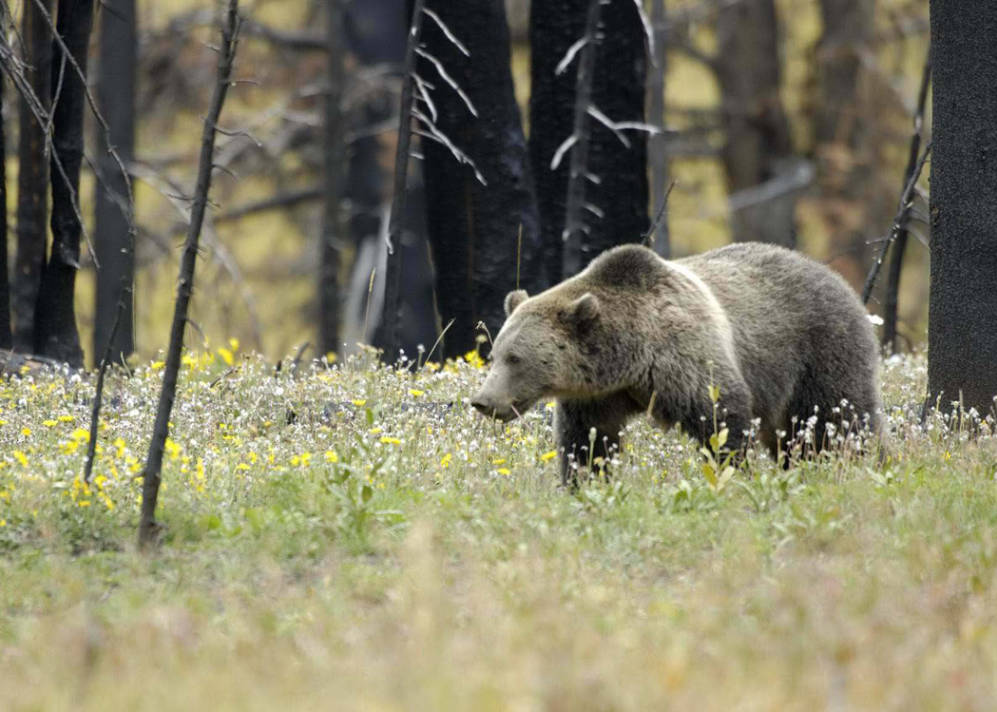The U.S. Fish and Wildlife Service recently proposed removing endangered species protections for Yellowstone grizzly bears. When the bear was first placed on the Endangered Species list 40 years ago, the population was less than 140 bears. Now in 2016, due in large part to endangered species protections, the grizzly bear population is estimated to be about 700 bears in the Greater Yellowstone Ecosystem.
Unfortunately, such a rebound in the bear numbers is overshadowed by significant threats that remain to the recovering bear population. These must be addressed before grizzly bears are stripped of endangered species protections. One is the sharp decline of whitebark pine nuts due to climate change. Another is a drop in cutthroat trout . Whitebark pine and trout have been primary food sources for bears, and their loss has driven grizzlies to find other food sources, like garbage, hunter-killed elk carcasses or livestock, that often bring them into conflict with people.
Yellowstone’s grizzly bears also face other challenges. They remain isolated from other bear populations, a disconnect which leads to inbreeding and all the problems associated with a lack of genetic diversity. They also face hostile state policies which focus on reducing bear numbers instead of implementing proven coexistence measures, and would allow sport trophy hunts of grizzly bears.
Hundreds of thousands of people from across the country have asked the U.S. Fish and Wildlife Service to not remove grizzly bears from the endangered species list.
Among them is a group of esteemed scientists, writers, and actors who recently sent a letter to the Obama administration urging the continued protection of Yellowstone grizzly bears. Chief among the concerns raised by the letter is the failure of the U.S. Fish and Wildlife Service to recognize the threat of climate disruption to grizzly bears in the Yellowstone region.
Any decision about the bear’s future should be put on hold until independent scientific review can explore potential impacts to bears from climate change. We strongly suspect that America’s great bears face a dire future, even with the continued protection of the Endangered Species Act.
Additionally, more than 50 Native American tribes, who view grizzlies as sacred, have passed formal resolutions opposing delisting. To many, the great bear symbolizes the very spirit of the earth itself. The GOAL tribal coalition has vocally opposed plans to remove grizzly protections.
National leaders, including Representatives Raul Grijalva (D-AZ), Debbie Dingell (D-MI) and Peter DeFazio (D-OR) also joined the chorus calling for continued conservation efforts for grizzly bears at a special briefing at the U.S. Capitol. (Watch a moving message from Jane Goodall to briefing attendees or view the briefing live stream.)
Such broad opposition supports what many Americans believe. It is too early in the recovery of grizzly bear populations to remove endangered species protections and allow trophy hunting of these magnificent creatures. The U.S. Fish and Wildlife Service must continue its commitment to restoring healthy populations of Yellowstone grizzly bears and not succumb to shrill political pressure that has no place in the conservation and professional management of America’s wildlife.
